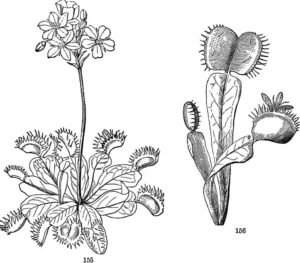- What is taxonomy?
- Taxonomy is the science of naming, describing, and classifying organisms.
- Who is considered the father of taxonomy?
- Carolus Linnaeus.
- What is a taxon?
- A taxonomic group of any rank, such as species, genus, family, etc.
- What is binomial nomenclature?
- The system of naming species uses two Latin words: genus and species.
- What is the hierarchy of taxonomic ranks from broadest to most specific?
- Domain, Kingdom, Phylum, Class, Order, Family, Genus, Species.
- What is a type specimen?
- A specimen designated to represent the name of a species.
- What is a phylogenetic tree?
- A diagram that shows the evolutionary relationships among a group of organisms.
- What is a cladogram?
- A type of phylogenetic tree that shows the evolutionary relationships based on shared derived characters.
- What is cladistics?
- A method of classification based on evolutionary relationships.
- What is a monophyletic group?
- A taxonomic group that includes a common ancestor and all of its descendants.
- What is a polyphyletic group?
- A taxonomic group that does not include the common ancestor of all members.
- What is a paraphyletic group?
- A taxonomic group that includes a common ancestor and some, but not all, of its descendants.
- What is the purpose of taxonomy?
- To organize and classify organisms based on their evolutionary relationships.
- What is systematics?
- The study of the diversity of life and the evolutionary relationships among organisms.
- What is a species?
- A group of individuals that can interbreed and produce fertile offspring in nature.
- What is a genus?
- A group of closely related species.
- What is a family?
- A group of related genera.
- What is a binomial name?
- The scientific name of an organism, consists of the genus name followed by the species name.
- What is a common name?
- A non-scientific name is used to refer to an organism, often varying by region or language.
- What is a subspecies?
- A taxonomic rank below species, representing distinct populations within a species that have evolved unique characteristics.
- What is a variety?
- A taxonomic rank below subspecies, representing distinct forms or variations within a species.
- What is a cultivar?
- A cultivated variety of plant species that has been selectively bred for specific traits.
- What is a morphological species concept?
- A concept of species classification based on observable physical traits.
- What is a biological species concept?
- A concept of species classification based on reproductive isolation and the ability to interbreed and produce fertile offspring.
- What is a phylogenetic species concept?
- A concept of species classification based on evolutionary relationships and shared ancestry.
- What is a hybrid?
- An organism resulting from the crossbreeding of two distinct species.
- What is a taxonomic key?
- A tool used to identify organisms based on a series of characteristics or traits.
- What is a herbarium?
- A collection of preserved plant specimens used for scientific study.
- What is a museum?
- A collection of preserved animal specimens used for scientific study.
- What is nomenclature?
- The system of naming organisms.
- What is classification?
- The process of arranging organisms into hierarchical groups based on similarities and evolutionary relationships.
- What is a phylum?
- A major taxonomic group of animals, plants, fungi, or bacteria; also known as a division in plants.
- What is a class?
- A taxonomic group below phylum and above order.
- What is an order?
- A taxonomic group below class and above family.
- What is a domain?
- The highest taxonomic rank of organisms, above kingdom.
- What is a kingdom?
- A major taxonomic group of organisms, below domain and above phylum.
- What is a rank?
- A level in the hierarchy of taxonomic classification.
- What is a fossil?
- The preserved remains or traces of ancient organisms.
- What is a voucher specimen?
- A preserved specimen deposited in a museum or herbarium to serve as evidence of an organism’s existence.
- What is a holotype?
- The single specimen designated as the type specimen for a species.
- What is a paratype?
- Additional specimens designated alongside the holotype to represent the variability within a species.
- What is an allopatric species?
- Species that are geographically isolated from each other and do not interbreed.
- What is a sympatric species?
- Species that live in the same geographic area and can interbreed.
- What is convergent evolution?
- The independent evolution of similar traits in unrelated organisms due to similar environmental pressures.
- What is divergent evolution?
- The accumulation of differences between populations that can lead to the formation of new species.
- What is a taxon name?
- The name given to a taxonomic group, such as a species, genus, family, etc.
- What is a phylogenetic classification?
- A classification system based on evolutionary relationships and shared ancestry.
- What is a taxonomic revision?
- The process of reevaluating and updating the classification of organisms based on new evidence or insights.
- What is a type locality?
- The specific geographic location where the type specimen of a species was collected.
- What is a hybridization zone?
- A geographic area where two distinct species come into contact and hybridize, leading to genetic exchange.



